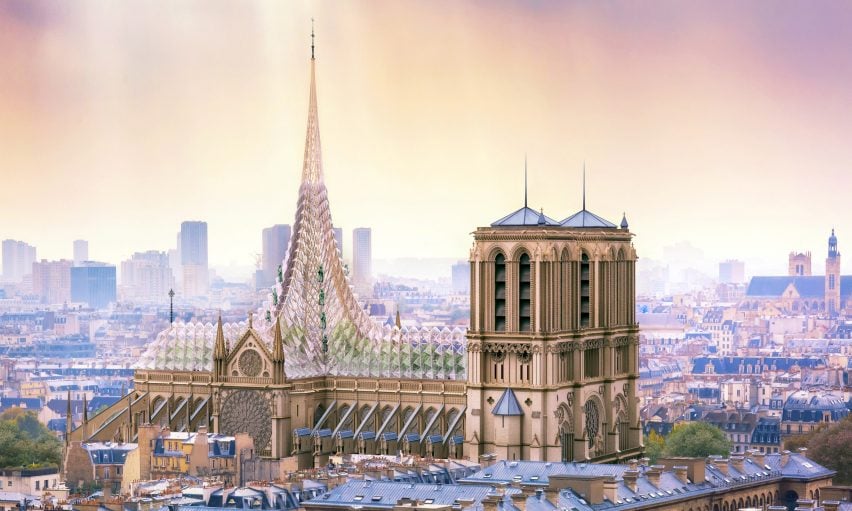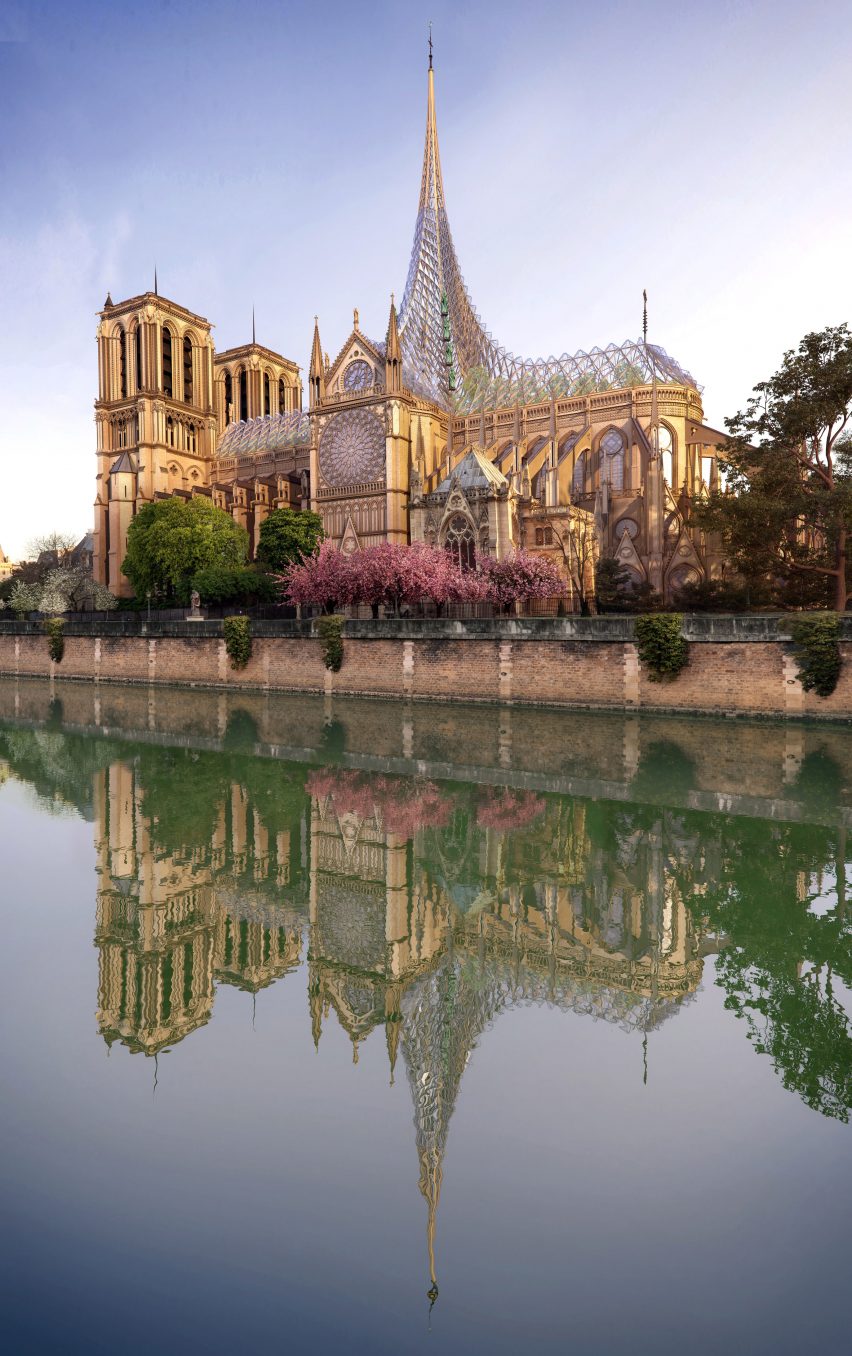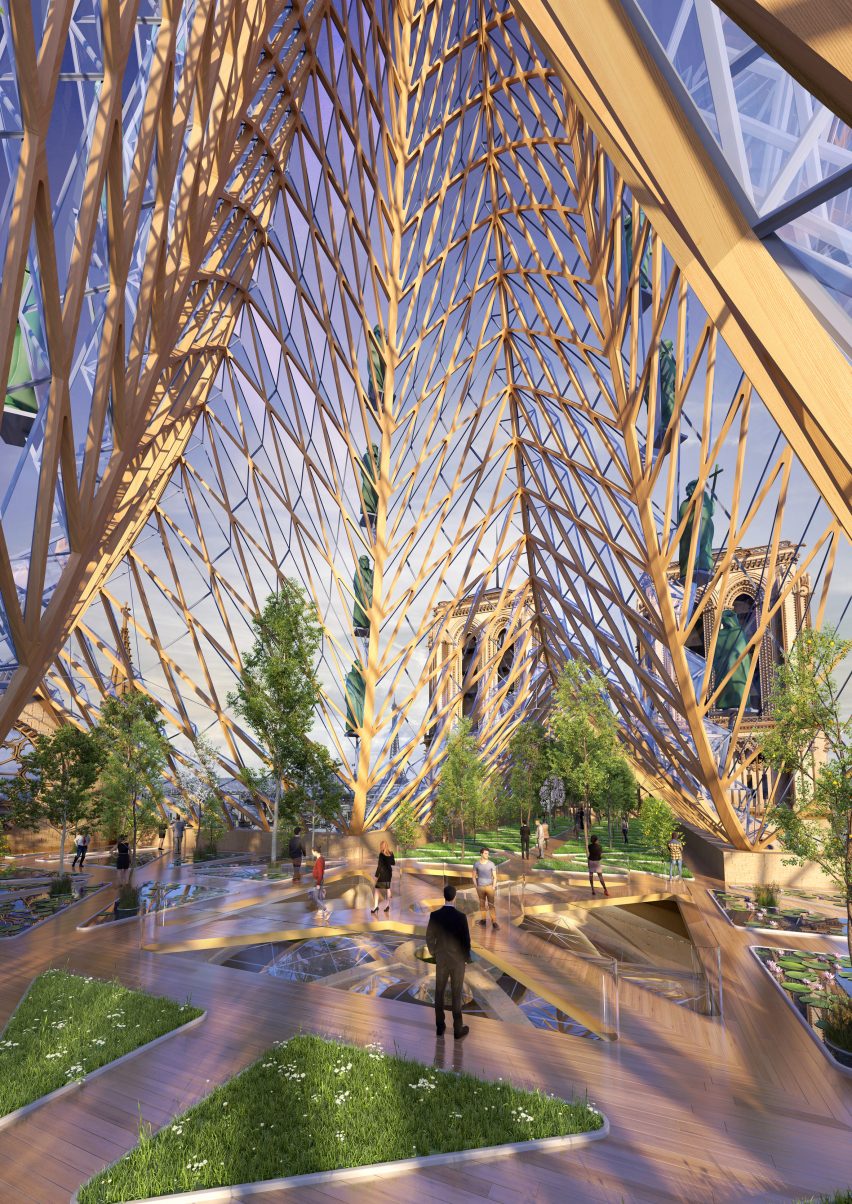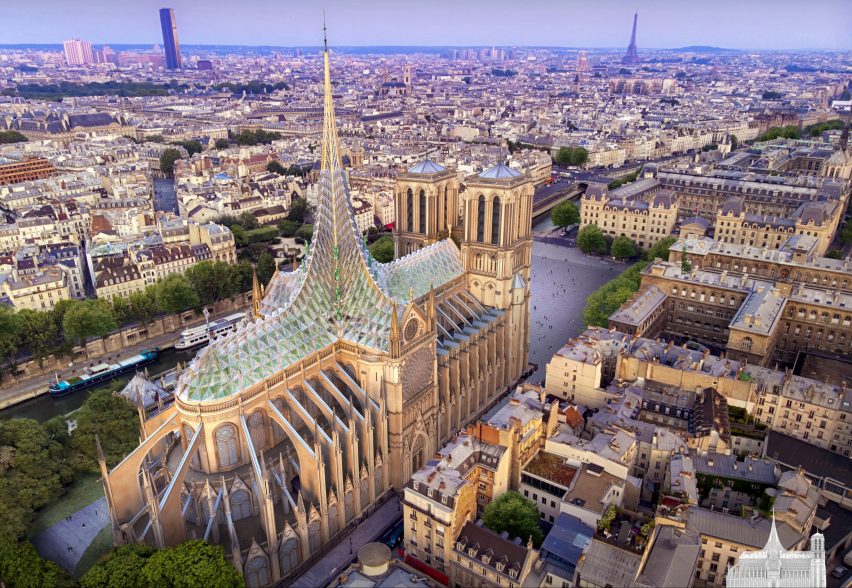
Vincent Callebaut proposes a roof that generates energy and food for Notre-Dame Cathedral
Paris-based architect Vincent Callebaut wants to give Notre-Dame Cathedral a new roof that generates energy and contains an aquaponic farm.
The proposal by Vincent Callebaut Architectures sees the historic cathedral transformed into an eco-friendly building, generating more energy than it consumes, while producing 21 tons of fruits and vegetables a year.
It would also give the gothic structure a "new face" for the 21st century.
"This powerful fire has awakened our dystopian imagination and somewhat echoed the church's current identify crisis, as well as the environmental challenges we are facing through climate change," said Vincent Callebaut Architectures.

The concept includes a roof built from cross-laminated timber (CLT) beams pre-stressed with carbon-fibre slats, with a tall spire rising at the crossing.
Between the timber beams, crystal-shaped glass elements would contain a living layer made from carbon, hydrogen, nitrogen and oxygen, able to absorb light and transform it into power.
"The cathedral would become an exemplary eco-engineering structure, and the church a true pioneer in environmental resiliency," explained the studio.

Below the roof, an urban farm would be used to grow food that could be distributed across Paris. Fruit and vegetables would be grown along the length of the nave using aquaponics, while the arms of the crossing will contain water pools to feed the system.
The studio calculate that up to 25 kilograms of food could be grown per square metre per year. This food would also be sold at a farmers' market in the square outside Notre-Dame.
The garden would also be used as a contemplation place for visitors.
At the crossing, below the spire, the roof will be left open to "let natural light flood the cathedral".
"Natural light would highlight the emblematic identity of this place at the intersection of the main branch of the nave and the transept," said the studio.

Vincent Callebaut Architectures think the project could demonstrate the potential of ecological engineering and be a socially minded response to the fire.
"We advocate for an exemplary project in ecological engineering that feels true to its time and avoids a pastiche architecture that turns the city into an open-air museum," said the studio.
"Circular economy, renewable energies, inclusive social innovation, urban agriculture, protection of biodiversity, without forgetting beauty and spiritual elevation: our reconstruction project feeds on such values to deliver a deep, conscious meaning."
Callebaut is one of several architects and designers to have created proposed for how to build Notre-Dame Cathedral since it was devastated by fire last month.
Miysis Studio also proposed a glazed roof, but suggested combining it with a reconstruction of the 19th century spire that was lost, while several studios have suggested alternative spire designs.
France's President has pledged to rebuild the cathedral in five years. However, conservationists have suggested that the rebuild could take at over a decade and over 1,000 architecture experts have warned him not to rush the reconstruction.
Join Dezeen's Notre-Dame Spire chat on Twitter, 15 May at 4 PM UK time with #dezeenchat ›